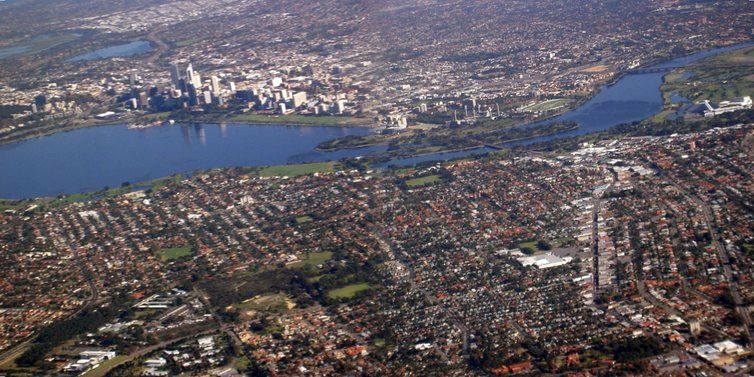|
Urban sprawl eats up more and more of the bush land around Perth every year. Perth's 'footprint' is now twice that of Tokyo and three times that of Los Angeles.
Some forecasts predict the population may reach 5.9 million by 2050. Already covering 6,000 square kilometres we are still spreading out instead of building up. The
question is, how long can this continue?
Perth will soon be Australia's third largest city (population wise) behind Sydney and Melbourne.
Although the suburbs stretch 150 km along our coast and up to 50 km inland, we still have one of the lowest population densities in the world with an average of
10 dwellings per hectare.
Buffer zones and bush land sanctuaries take second place to profits. An example of the is an area known as Long Point just south of Rockingham. For years the
area was used by local people with 4 wheel drives for fishing and camping. Driving in the dunes was heavily restricted in case damage was done to the flora & fauna,
which was fair enough, but then the area was sold off to a developer and bulldozers moved in and flattened all the vegetation anyway.
Now the locals have been prevented from entering their own beach which is being reserved for rich overseas tourists.
An area equivalent to ten W.A.C.A. grounds of bushland is cleared for housing every week!
Where once houses in Perth suburbs sat on 1/4 acre blocks today there is room for a house only with little or no garden. While block sizes have more than halved,
prices have soared by over 400% since 1990. The price for a low end property on a small block in an outer (less desirable) suburb is (as of 2013) $360,000 or more.
New suburbs are a wasteland of concrete, bricks and tiles. Few trees are left once the developers move in and many new houses are no more than little boxes
crammed right next to each other, row upon row in featureless, soulless 'burbs' that chew up more and more bush every year.
The mining boom may have kept Australia from the world recession but Perth paid the price for all the extra people flocking here to live.
Australia's overall total population increase is currently (January 2018), one person every 1 minute and 26 seconds. Unchecked population growth is probably the largest problem the world faces
as resources dwindle and climate change begins to change how we live.

"The Australian Bureau of Statistics is forecasting Perth's population to hit 3.8 million from its current 1.7 million by 2050.
For the first time the bureau has looked at what that will mean to Perth residents - and the picture is dominated by sprawling suburbs and long journeys to work.
Already the city covers 5423sq km but statistician Phil Smythe found that if the population reached 3.8 million, and even if housing density increased, Perth would sprawl over 12,000sq km.
New York City, home to 17.8 million people, covers 8700sq km.
Perth would stretch from the coastal hamlet of Lancelin in the north to the Lakes turn-off in the Perth Hills and south to a point midway between Mandurah and Bunbury.
The population density of Perth would increase to 710 people for every square kilometre, up from 319.
Mr Smythe said the number of vehicles would swell from 900,000 to almost two million.
Thousands of kilometres of roads would have to be built to cope with the extra traffic, and the use of public transport would have to increase dramatically."
West Australian Newspaper article, Wednesday, 31 March 2010
|








